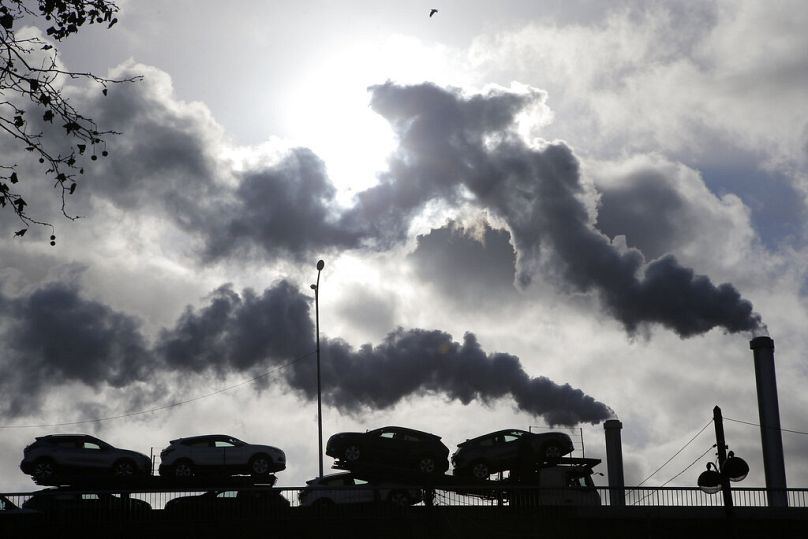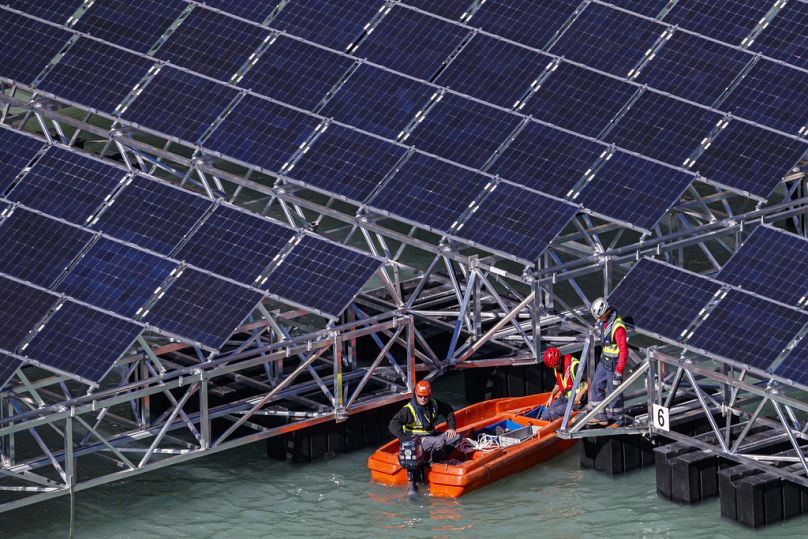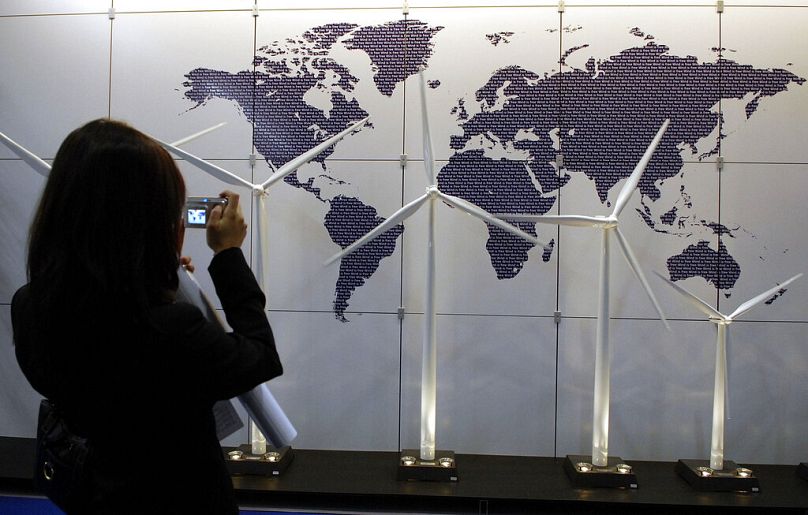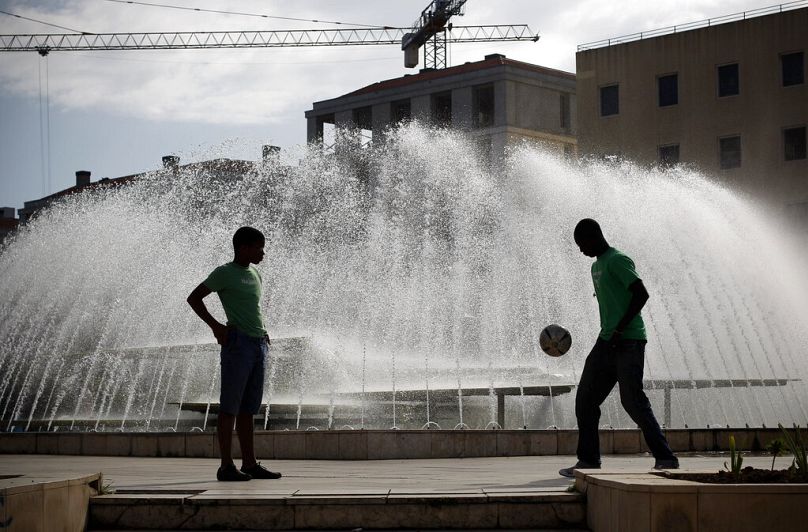To keep up with its climate ambitions, five priority areas must urgently be put at the forefront of the European green agenda, World Economic Forum's Marushia Gislén and Emmy van Enk write.
The EU is a longstanding frontrunner in international efforts to keep global warming under 1.5 degrees Celsius.
At COP28, the EU’s position was again crucial in setting the level of global ambition and the EU is now proposing to cut 90% of its emissions by 2040.
At the same time, a recent report found that the EU will likely miss the majority of its 2030 green objectives and far-right parties are gaining ground ahead of the European elections as voters and businesses worry about the cost of the transition.
To keep up with its climate ambitions, five priority areas must urgently be put at the forefront of the European green agenda.
Targeted support for households
The EU’s commitment to more ambitious emissions reductions is facing societal pushback, evidenced most recently by farmer protests across the continent resulting from cost pressures and burdensome paperwork diverting resources from core business.
Research also shows that the burden of decarbonising the economy falls heavily on low-income earners.
Despite signs that renewable energy and insulation are providing protection against rising bills and inflation, there is growing antipathy towards the climate agenda which in turn contributes to a loss of trust in our institutions.
Vulnerable households cannot be expected to pay for the transition and policymakers must communicate a clear path to relieving cost pressures from the transition.
This can be achieved by committing to targeted support for low-income households and highly exposed sectors, such as agriculture.
Policymakers could draw inspiration from the example of Ireland, where carbon tax proceeds are used to support low-income households and where climate funds are insulated from political shifts.
Rethinking financing
It is difficult to speak about funding priorities as all pieces of the green transition puzzle require equal focus — from the microeconomic impact on households and SMEs to the industrial transformation that must take place in a more competitive global economy.
While national governments have the core responsibility to support their populations in the green transition, the EU could benefit from taking a leading role in developing a targeted transfer scheme to help countries cope.
It has been estimated that additional investments of over €620 billion annually will be needed to meet the objectives of the Green Deal, excluding transfers to households, and while the Just Transition Fund aims to “alleviate socio-economic costs triggered by the climate transition”, the money available is far from sufficient to deliver on that objective.
On the industry side, starting in 2026, the EU's landmark tool to fight carbon leakage — the Carbon Border Adjustment Mechanism (CBAM) — will be fully operational with an estimated annual €1.5bn in revenue to be allocated to the EU budget.
This represents a modest but welcome source of additional funding which can be used to support Europe’s transition. As an added benefit, the EU could use parts of CBAM revenues to support key trading partners in greening their economies to help reduce overall emissions whilst making it easier for them to trade with the EU.
The launch of the European Green Deal Industrial Plan (EGDIP) allows for the relaxation of state-aid rules, including for member states to grant subsidies or tax incentives to match what is being offered by other countries.
This can be tempting as estimated investment needs are enormous, including €584bn per year until 2030 only to develop power grids. But an uncoordinated approach to state aid — even temporarily — risks resulting in an uneven playing field and intra-European subsidy race which would worsen the functioning of the single market and thereby European competitiveness. In the long run, this would leave Europeans worse off.
Instead, the EU needs its own tools with sufficient funding and, on the private side, deepening capital markets would lower risk premiums, and spur innovation and growth.
Further, greater clarity on the future of EU safe assets would guide the development of new financing instruments across the continent.
Urgently phase out fossil fuel subsidies
To meet its climate targets, the EU needs to phase out the use of fossil fuels in public electricity and heat generation by 2040.
Ahead of COP28, the European Parliament adopted a resolution to end all subsidies for fossil fuels globally by 2025.
However, EU member states have not been able to translate this ambition into national legislation.
This will result in a delayed fossil fuel phase-out and stranded assets in the form of newly developed fossil fuel infrastructure — unless these can be repurposed for clean energy infrastructure further down the line.
In addition to urgently concluding negotiations on the overdue revision of the Energy Taxation Directive, European governments should step up the use of financial incentives (including rebates, tax credits, and financing programs) for households to turn to alternative fuel sources.
Increase the efficiency of regulations on using digital tools
While permitting processes for renewable energy projects in the EU can take 7–10 years to be approved, improving these processes would help lower the prices of clean energy for industry and consumers.
The CEO Action Group for the European Green Deal see complex application processes and long approval timelines as key bottlenecks.
Similarly, the lack of clear frameworks for investors to evaluate the financial materiality of climate- and nature-related risks limits their access to private finance.
To speed the development and deployment of renewable energy across Europe, digital mechanisms and clear guidance should be put in place to help member states adopt and operationalise streamlined permitting processes.
As a first step, the EU should develop uniform standards across member states for permitting procedures and set clear deadlines for permitting decisions to be made. This would help both increase access to public financing and facilitate the development of urgently needed renewable energy infrastructure.
The Single Window for Customs initiative enables a single point of entry for authorities to exchange information submitted by traders.
Replicating this for environmental regulation could significantly increase the efficiency of both environmental reporting and permitting processes.
Speed up the electrification of the economy
EU leaders have set a target for renewables to meet 42.5% of final energy demand by 2030.
Without serious investments in energy infrastructure, however, these targets risk being dead on arrival.
The lack of renewable energy capacity in European national power grids is already considered a major blocker by businesses, who are setting themselves decarbonisation targets and relying on renewables-based electricity to reach them.
Currently, 40% of Europe's power distribution grids are over 40 years old and most are designed around large, centralised power plants which will need upgrading to distribute power from solar panels and wind farms expected to be plugged in this decade.
Last December, the European Council and the European Parliament finally reached a provisional agreement to reform the EU’s electricity market design following months of protracted talks arising from member-state disputes over state aid for power plants.
Once entered into law, this could make it easier and faster for grid operators to invest in upgrading networks.
There's no time to lose
As the dust settles following COP28 and the 2024 Annual Meeting in Davos, one thing is certain — the politicisation of climate policy poses a major risk to the credibility of EU climate targets.
Refocusing on improving the business case of the European Green Deal is a great first step.
Now it’s time to bring households onboard as well.
With European elections around the corner, anti-climate backlash rising, and the planet warming we have no time to lose.
Marushia Gislén is Community Lead, Europe and Eurasia, and Emmy van Enk serves as Specialist, Europe and Eurasia at the World Economic Forum.
At Euronews, we believe all views matter. Contact us at view@euronews.com to send pitches or submissions and be part of the conversation.
















